INFORMS 2014 Annual Meeting in San Francisco, CA

6000+ academics and business people came to San Francisco for the biggest INFORMS Annual Meeting ever with 80+ concurrent sessions. This year, my Data Analytics group (Ghent University) had three talks at the event, so we were fairly busy. The main tag line was: Bridging Data and Decisions. Central themes at this event included: Analytics, Data Mining, Social Media, Big Data, prescriptive analytics, ...
The actual conference was preceded by pre-conference vendor workshops. Since I had visited most of them during previous editions my choice was limited. Therefore, I decided to visit the Matlab software workshop. We had switched away from Matlab to open-source R three years ago in our two analytics programs: MScMA and Business Engineering/Data Analytics. Hence, I had not followed up on the latest Big Data developments in Matlab. I must admit that I was impressed as to its new capabilities to scale algorithms across multiple cores and machines. If they did not have such a restrictive licensing policy, I would consider having a closer look at their new features.
Wednesday 12 November 2014

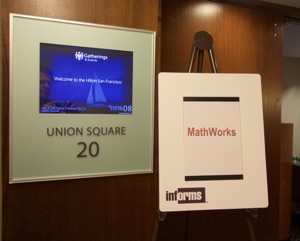
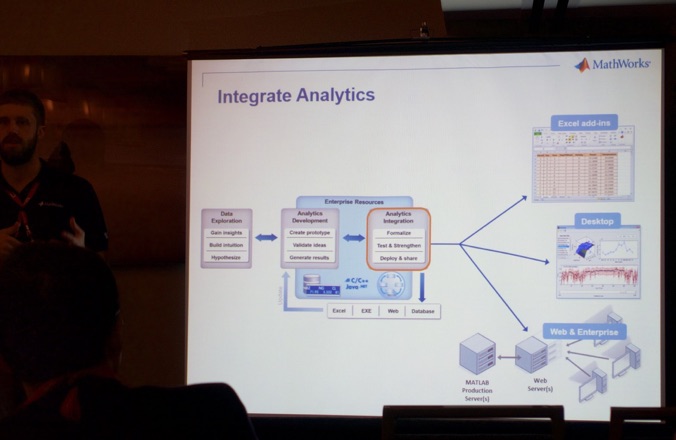
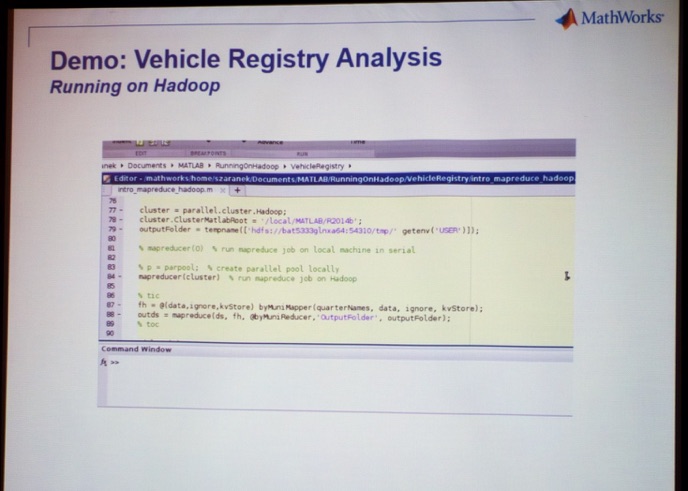
On Sunday, the conference started off with lots of parallel sessions. I decided to attend the “Analyzing Social Networks and Social Media I” Session.
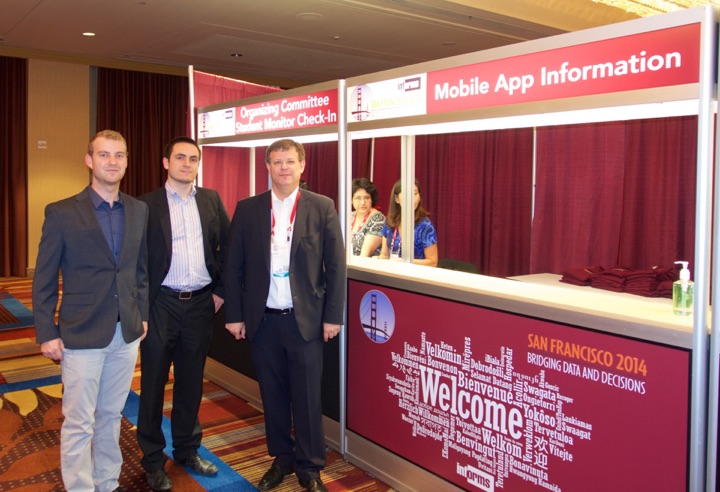
The first talk was by Xi Wang (The University of Iowa, see picture below) titled “Predicting User Engagement in Online Health Communities Based on Social Support Activities (co-authors: Kang Zhao, Nick Street). This research builds a predictive model of members’ engagement in online health communities.
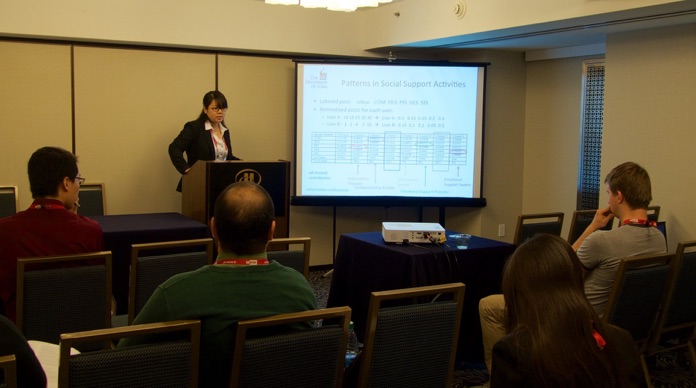
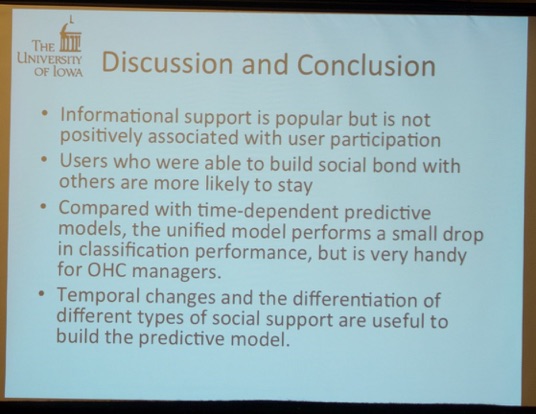
Next, Mi Zhang (Drexel University, see picture below) presented the paper “User Analysis and Recommendation in Online Health Communities” (co-author: Christopher Yang). She analyzes a smoking-cessation forum - QuitStop - to investigate how users interact with each other, and recommend discussion topics for them.
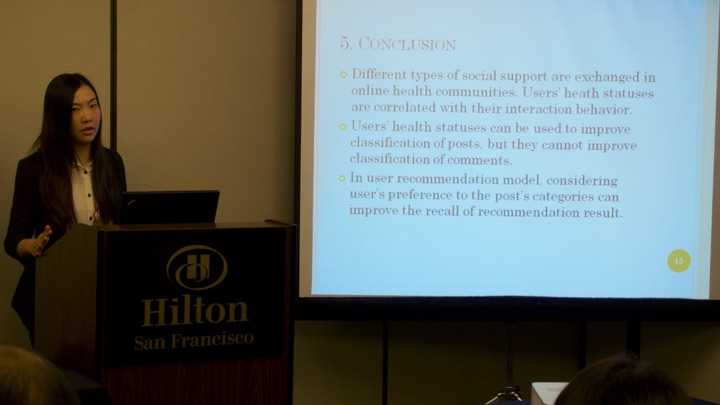
Next, Dr. Nitin Agarwal (University of Arkansas at Little Rock) presented the talk titled “Sociotechnical Behavior Mining: Challenges, Opportunities, and Beyond.”
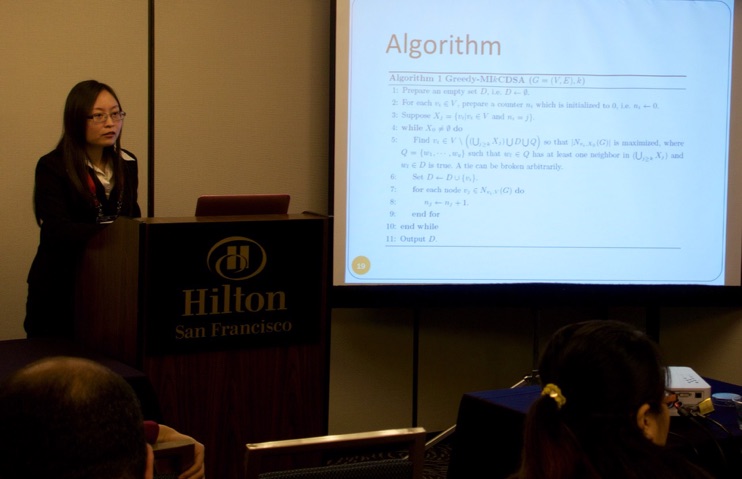
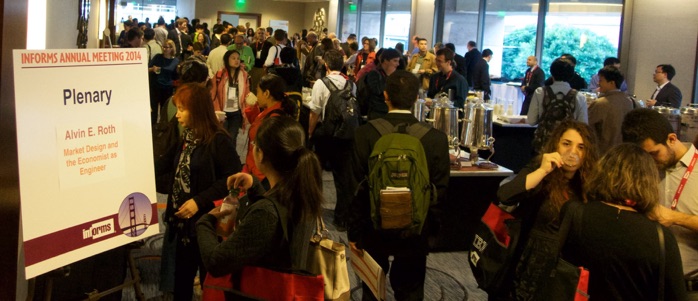
Next, time had come for the first plenary of the conference by Dr. Alvin Roth - The Craig and Susan McCaw Professor of Economics at Stanford University and the George Gund Professor Emeritus of Economics and Business Administration at Harvard. Dr. Roth shared the 2012 Nobel Memorial Prize in Economic Sciences.
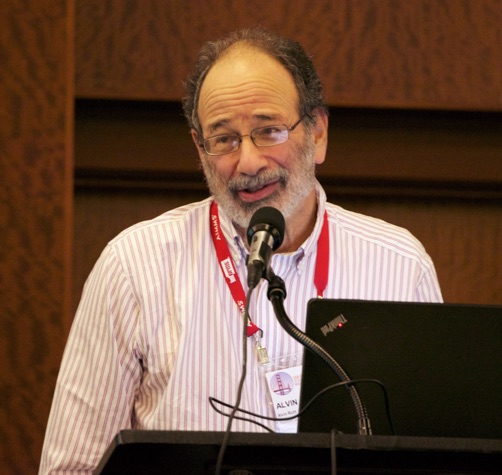
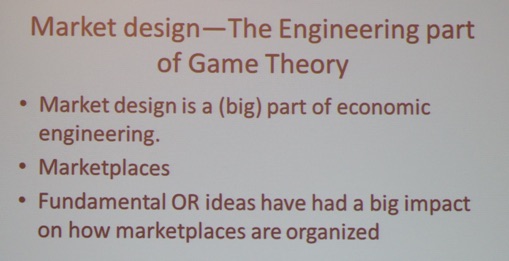
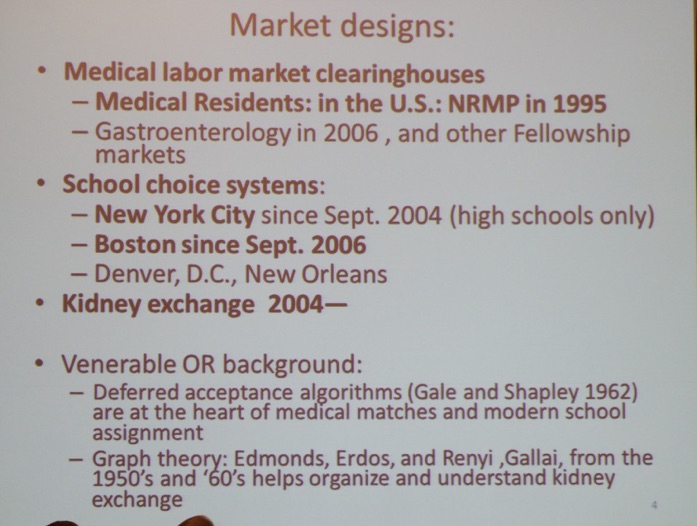
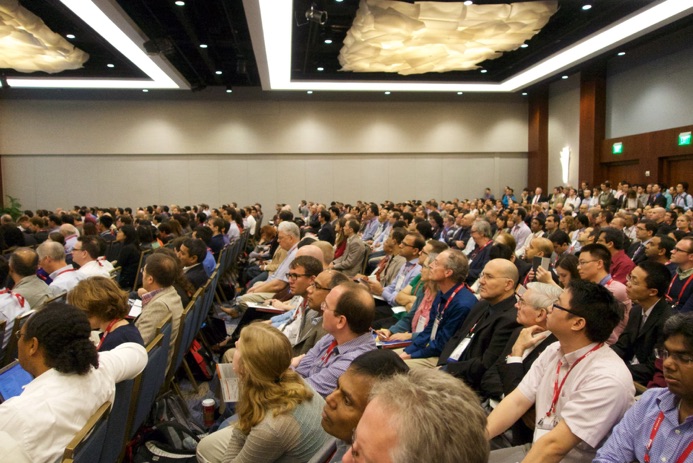

Next, I attended the “Modeling Airline Coordination and Competition for Improving National Airspace System Performance” Session.
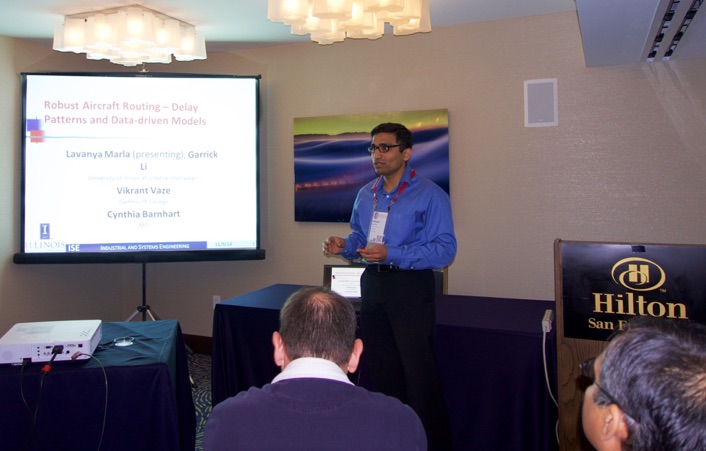
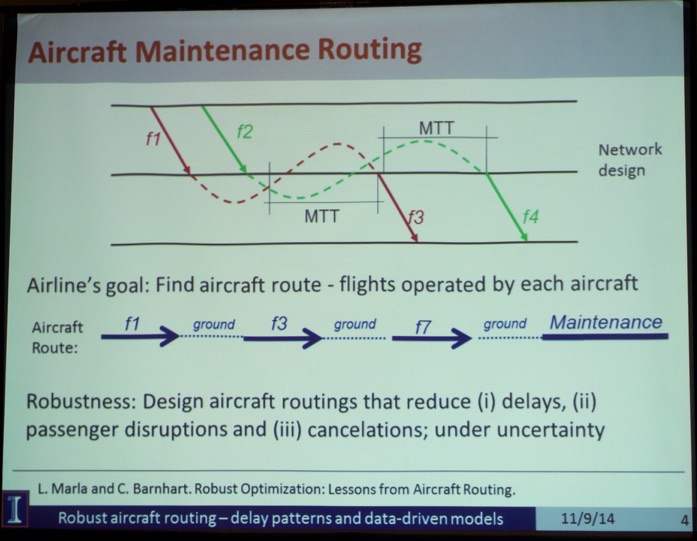
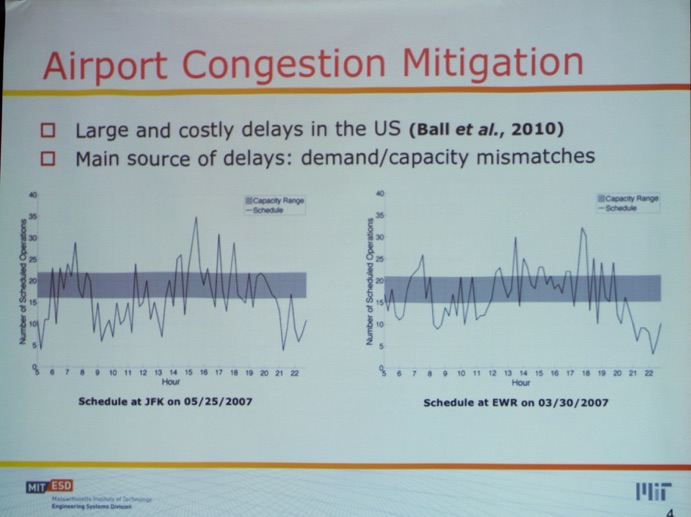
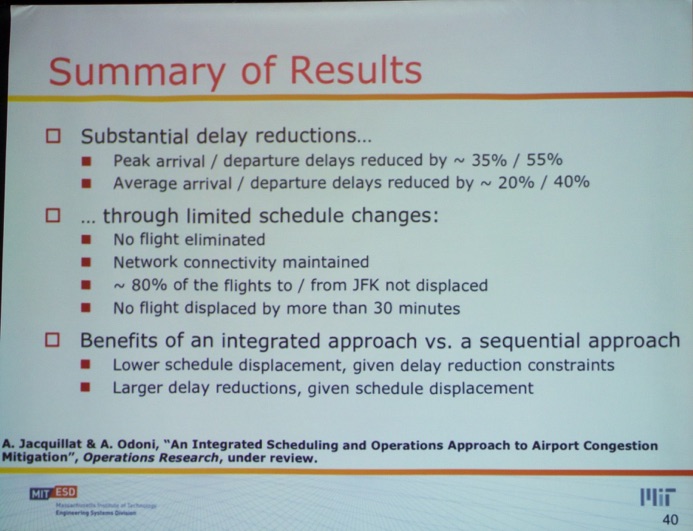
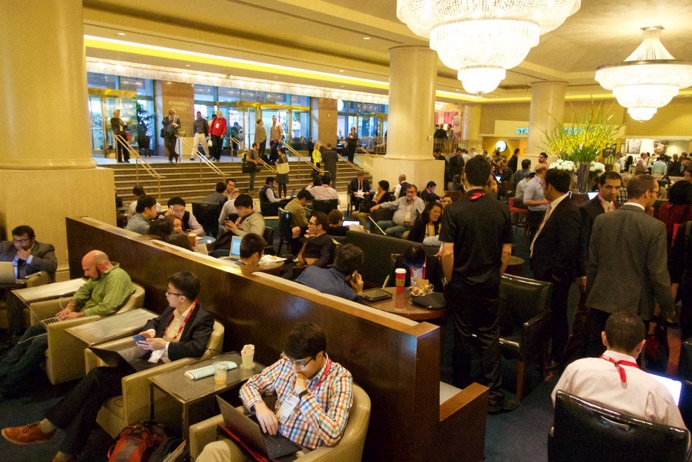
After lunch, we joined the “Rich Vehicle Routing Problems I” Session because this also included Dauwe Vercamer (@DauweVercamer, see picture below)’s talk.
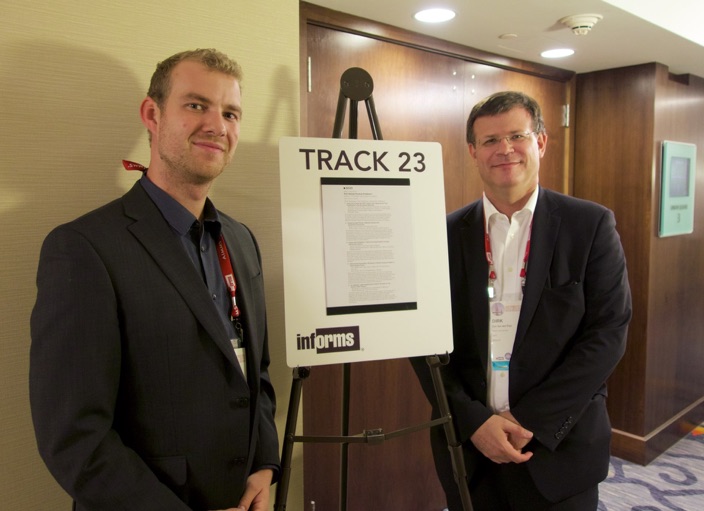
The first talk in his session was by Baoxiang Li (TUE, Eindhoven, Netherlands) titled “An Adaptive Large Neighborhood Search Heuristic for the Share-a-Ride Problem” (co-authors: Dmitry Krushinsky, Tom Van Woensel). The Share-a-Ride Problem (SARP) aims at minimizing the cost of serving a set of passengers and parcels using a set of homogeneous vehicles. They propose an Adaptive Large Neighborhood Search (ALNS) heuristic for the SARP.
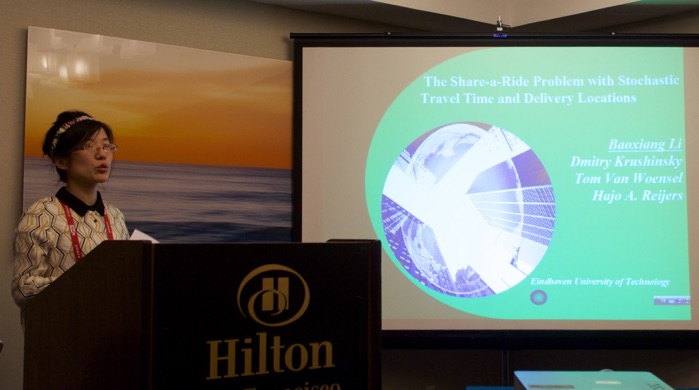
Next, Zhijie Dong (Cornell University) presented her talk “Designing Split Pickup Collection Routes with Operational Constraints” (co-author: Mark Turnquist). They developed an extension of the Split Delivery Vehicle Routing Problem (SDVRP) that includes constraints on the number of routes visiting any customer and the total number of customers receiving split service.
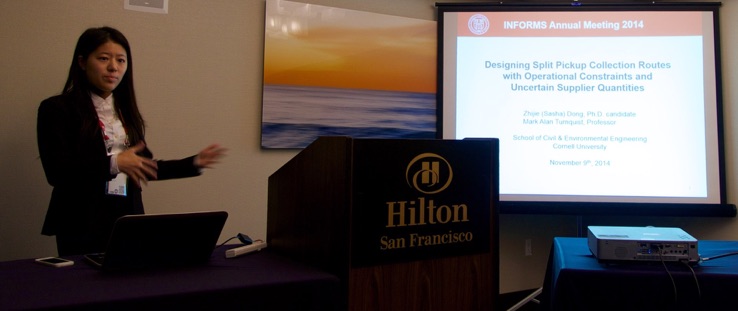
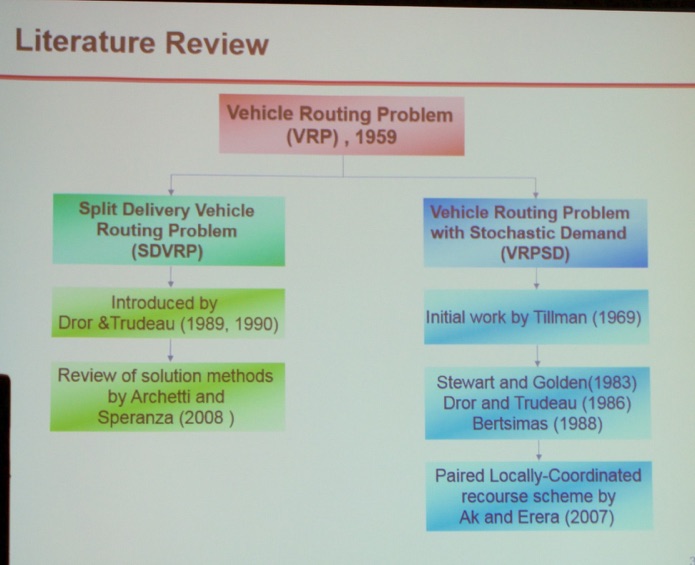
Then, Dauwe Vercamer (Ghent University, Belgium) took the stage with his talk “Improving Profitability of Vehicle Routing Problems through Advanced Analytics” (co-authors: Dirk Van den Poel, Michel Gendreau, Philippe Baecke). Based on a real case in door-to-door sales, the study assesses whether revenue predictions coming from transactional data can effectively be used to improve fleet schedules. To do this, two different customer selection models are compared. In the static model, customers are first chosen based on the revenue predictions and then routed through a VNS. The dynamic model uses the predictions in an orienteering problem. Initial results show that the dynamic approach is the most profitable.

Next, Yiou Wang (Penn State University) presented his paper “Hierarchical Optimization Modeling of Vehicle Routing Problem in Urban Supply Chains” (co-authors: Terry Friesz, Tao Yao, Hongcheng Liu, Ke Han).

Next, I attended the “Machine Learning, Data Mining, and Statistics I” Session. The first talk was by Seyda Ertekin (MIT) titled “Predicting Power Failures in Electrical Grids” (co-authors: Cynthia Rudin, Tyler McCormick). They presented a new statistical model for predicting discrete events continuously in time, called Reactive Point Processes (RPP’s).
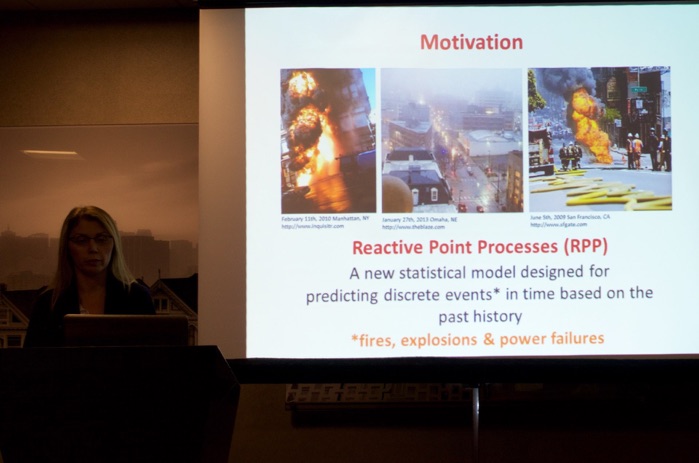
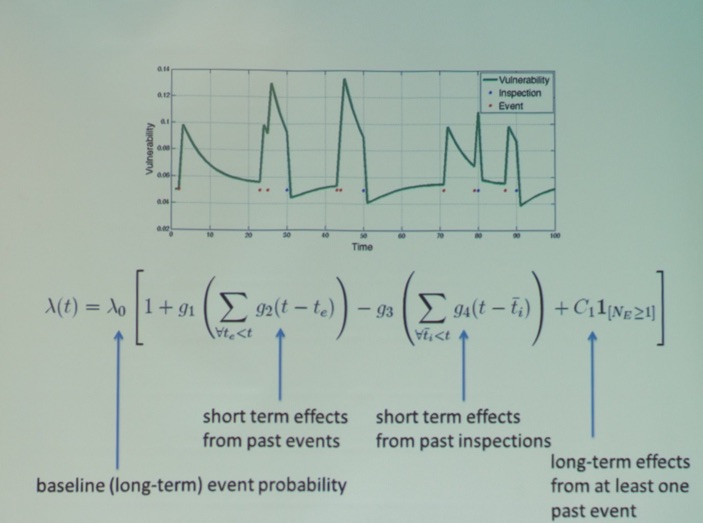
Next, Dawn Woodard (School of ORIE, Cornell University) presented the talk “Statistical Methods for Ambulance Fleet Management” (co-authors: Shane Henderson, David Matteson, Bradford Westgate). They address a problem arising in the management of ambulance fleets: Predicting the distribution of ambulance driving time on an arbitrary route in a road network. They propose a computationally efficient procedure to train a statistical model using GPS data from ambulance trips.
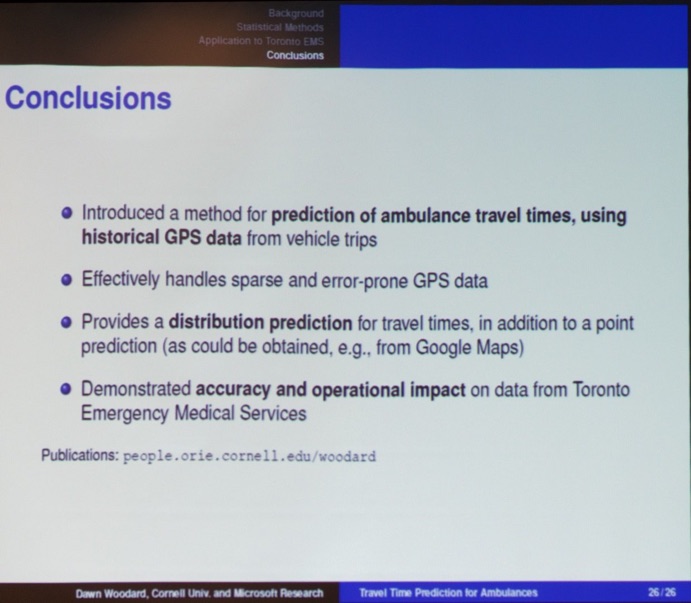
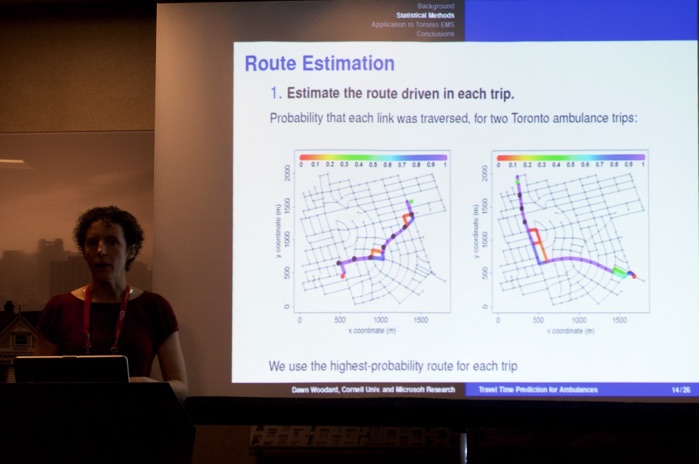
Next, we had a nice reunion with my (former) PhD students. In the picture below, from left to right: Michiel Van Herwegen, Dauwe Vercamer, Dr. Philippe Baecke and yours truly (@dirkvandenpoel).
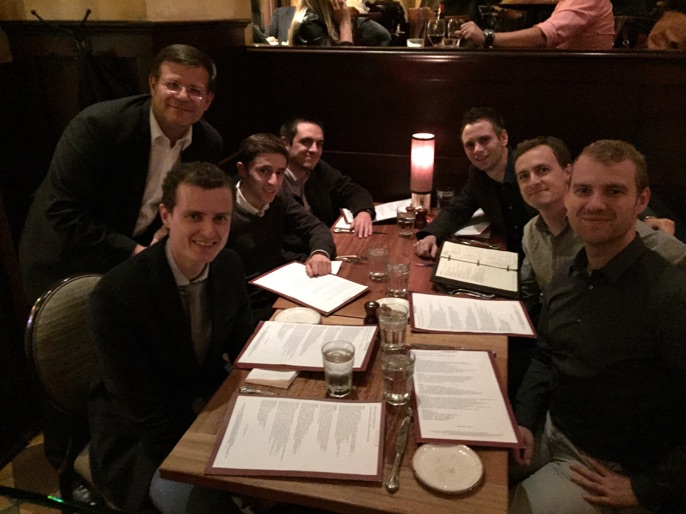
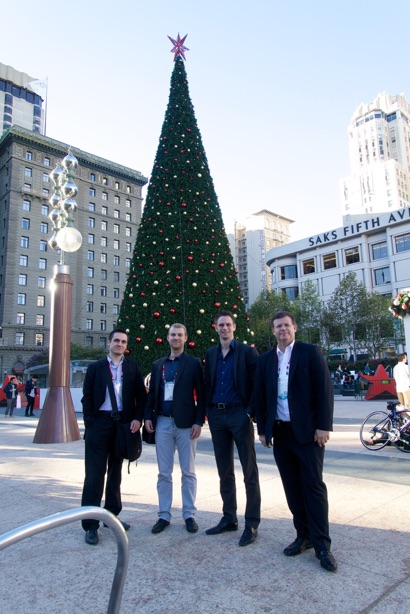
That evening, Dr. Michel Ballings - who moved to University of Tennessee at Knoxville after obtaining his PhD at Ghent University - and Willem Standaert (Ghent University) joined us as well.

This is a compressed report of UGent team highlights in the next days at the INFORMS event:
Prof. Dr. Michel Ballings (Univ. of Tennessee - Knowville, see picture below) presented our joint UT/UGent research in a fully-packed room.

Next, Willem Standaert (UGent, see picture below on the left) and Prof. Dr. Steve Muylle (UGent and Vlerick Management School) presented their research titled “An Empirical Study of Electronic Reverse Auction (ERA) Project Outcomes and Satisfaction”.


Next, Michiel Van Herwegen (UGent, see picture below) presented his Big Data talk at INFORMS.
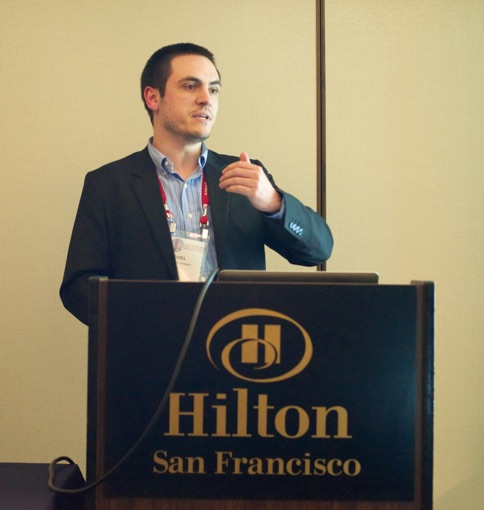
This was a great conference in a great city... INFORMS 2015 in Philadelphia... here we come.